You’ve probably heard about native plants, but what are they? Where do they grow? What’s the hoopla about supporting wildlife like bees and butterflies, and following a low-maintenance schedule? Trust me, I know that the issues surrounding native plants can be complicated, but we’re going to break down the basics to help you make informed and empowered landscape decisions.
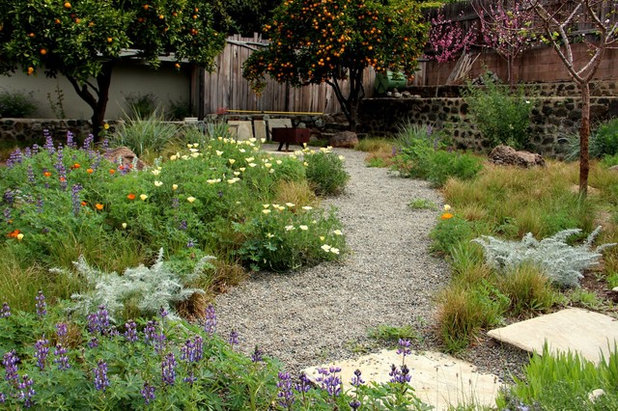
Gardens by Gabriel, Inc.
What’s a native plant? I like Doug Tallamy and Rick Darke’s definition of a native plant from their book
The Living Landscape. In the text, they define “native” as “a plant or animal that has evolved in a given place over a period of time sufficient to develop complex and essential relationships with the physical environment and other organisms in a given ecological community.”
Are native plants easier to grow? Native plants can be less work in the home garden if you do your homework or work with a professional who knows their plants and your environment. We have to match the right plant to the right place if we want specimens that practically take care of themselves. This means taking soil, drainage, slope, sunlight and the nearby plant community, among other factors, into consideration. You wouldn’t plant moisture-loving Culver’s root (
Veronicastrum virginicum) on a sandy slope or drought-tolerant prairie clover in a bog.
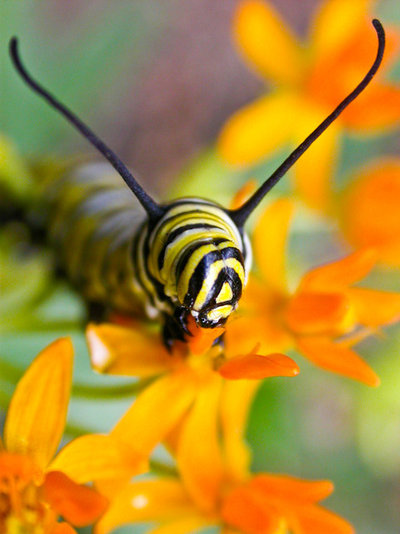
Holm Design & Consulting LLC
How are native plants important for wildlife? The majority of insects can reproduce only on plants they have an evolutionary history with — think about the fact that monarch butterflies can lay eggs only on milkweed (
Asclepias spp.). There are also many native bee species that time their life cycles for when certain native plant species are in bloom — they rely on that specific plant’s pollen to feed their larvae in the nest.
Songbird chicks eat an exclusive diet of adult insects and caterpillars fed to them by their parents. Some species need hundreds of insects a day while in the nest over several weeks. Birds need insects to survive, and insects need native plants. This is just one example that demonstrates why native plants are so important to wildlife.
Shown: A monarch butterfly caterpillar feeds on a butterfly milkweed plant (
A. tuberosa).
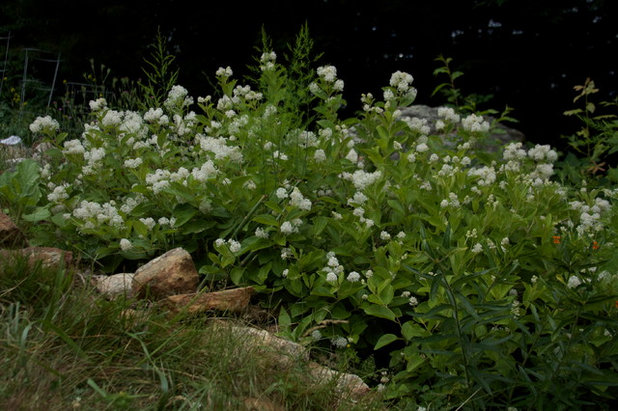
Ellen Sousa/Turkey Hill Brook Farm
Where do I find plants native to my region? First, see if your local university extension or botanic garden has lists of plants native to your region. There are also searchable databases from organizations such as the Pollinator Partnership and the Xerces Society. An Internet search also should reveal if there are any specialty native plant nurseries near you. Such businesses will have superior expertise in native plants, native plant garden design and the local environment to best match plants to your landscape. Local preserves and wild parks can also provide native planting inspiration.
Shown: New Jersey tea (
Ceanothus americanus)
Browse native plant profiles on Houzz by region
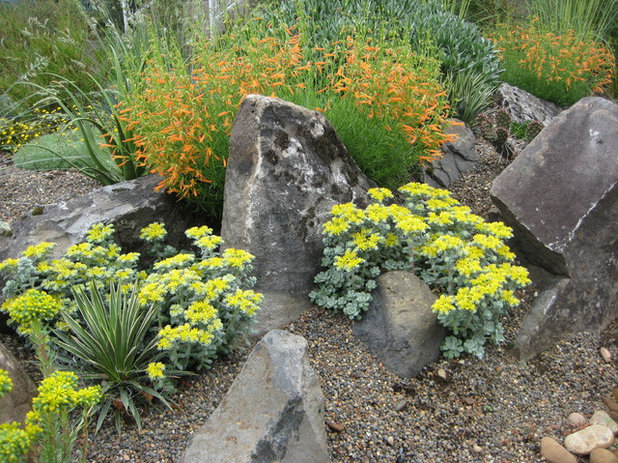
Xera Plants
What about cultivars and hybrids? A cultivar can be a plant selected in the wild or in a garden that shows special traits different from the straight species. A cultivar may also be a hybrid bred in controlled settings by botanists trying to change the form, leaf or flower color, or some other ornamental attribute.
Research is just now beginning to test some plant species to see whether such ornamental changes influence how wildlife, like pollinators, use them and if they hold the same benefit. For example, when we alter the leaf color, can a butterfly still recognize it and use it as a host plant for its eggs? When we alter petal color or bloom size, does that change the pollen or nectar nutrition, and what role does that change have on pollinator populations? Genetically, are these plants as adaptable to unpredictable forces like climate change that significantly alter wet and dry periods? These are just some of the many issues that need much more study at the regional and local level.
Shown: ‘Cape Blanco’ broadleaf stonecrop (
Sedum spathulifolium ‘Cape Blanco’)
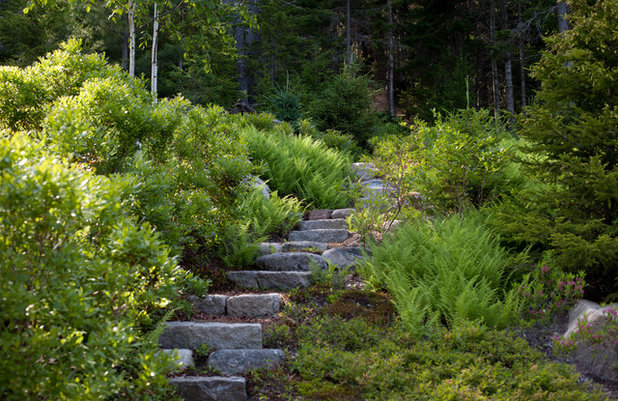
Matthew Cunningham Landscape Design LLC
What questions do I ask at the garden center or nursery? Ask if the plants have been treated with any systemic pesticides, like neonics, which linger in the plant and can kill any insect feeding on the leaf, nectar or pollen. If the retailer can’t answer that question, walk away.
I also like to ask where the plants were grown and where they are from — these often bring two different answers. Many nurseries grow their own plants locally but do so with liners or plugs (seedlings or 1-year-old plants) grown in another state or even many states away. The reason I like to ask where the plants are from, meaning where their seed source or genetic origin lies, is because a black-eyed Susan from Georgia blooms at a different time from a black-eyed Susan from Michigan.
If we’re trying to match bloom time to pollinator emergence, then source is an important issue. Ideally we’d also like garden plants that can increase the genetic health of wild plants beyond the garden fence, and mixing plants from locations far apart might harm wild plants and wild ecosystems — this is also why plants grown from open-pollinated seed are so important versus plants grown from cuttings or clones (if all the black-eyed Susans in a city are clones of one another, meaning essentially the same plant, a disease could wipe them all out at once.)
Ask for more native plants — the more we create demand, the more nurseries will sell these important plants while increasing the selection.
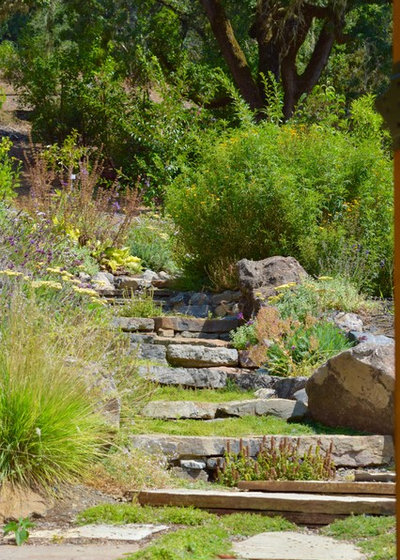
DIY Edible Gardens, Inc.
How do I design a garden with native plants? Visit local parks, botanic gardens and garden tours that feature native plants. Consult with a landscape designer who specializes in native plants. Finally, start experimenting. After you’ve researched plant-growing conditions outside and online, dig away. Sure, the plants may struggle, fail or even move to where they really want to be, but this is valuable information. Gardening isn’t about immediate perfection but rather about the knowledge and community of being in a place over time — something at which native plants excel.
Since I live where the tall-grass prairie used to be, I visit local prairie preserves and restorations to get a sense of what plants are thriving, where they are thriving and among what other plants they are growing. That information will clue me in on plant combination ideas as well as plants that will match the site.
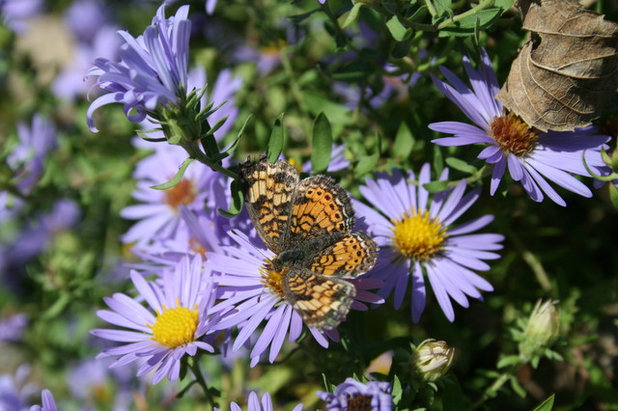
Benjamin Vogt / Monarch Gardens
Where can I read more?- The Houzz Garden section has more guides to choosing and growing native plants by U.S. region
- Bringing Nature Home by Doug Tallamy is the quintessential starter text and is highly motivational.
- The Living Landscape, Tallamy’s collaboration with landscape designer Rick Darke, shows how and why to arrange your garden landscape as a habitat that mimics nature.
- The Know Maintenance Perennial Garden by Roy Diblik will help you understand how to create a garden that requires less work than traditional landscapes.
- Planting in a Post-Wild World by Thomas Rainer and Claudia West explores more detailed design principles centered on urban garden habitats.
- A Sand County Almanac by Aldo Leopold will get your brain and your heart pumping.
Additionally, many regional books also will be beneficial.
Shown: Smooth aster (
Symphyotrichum laeve)
Tell us: Are you ready to try gardening with native plants? If you already have, upload a picture of your garden in the Comments.





